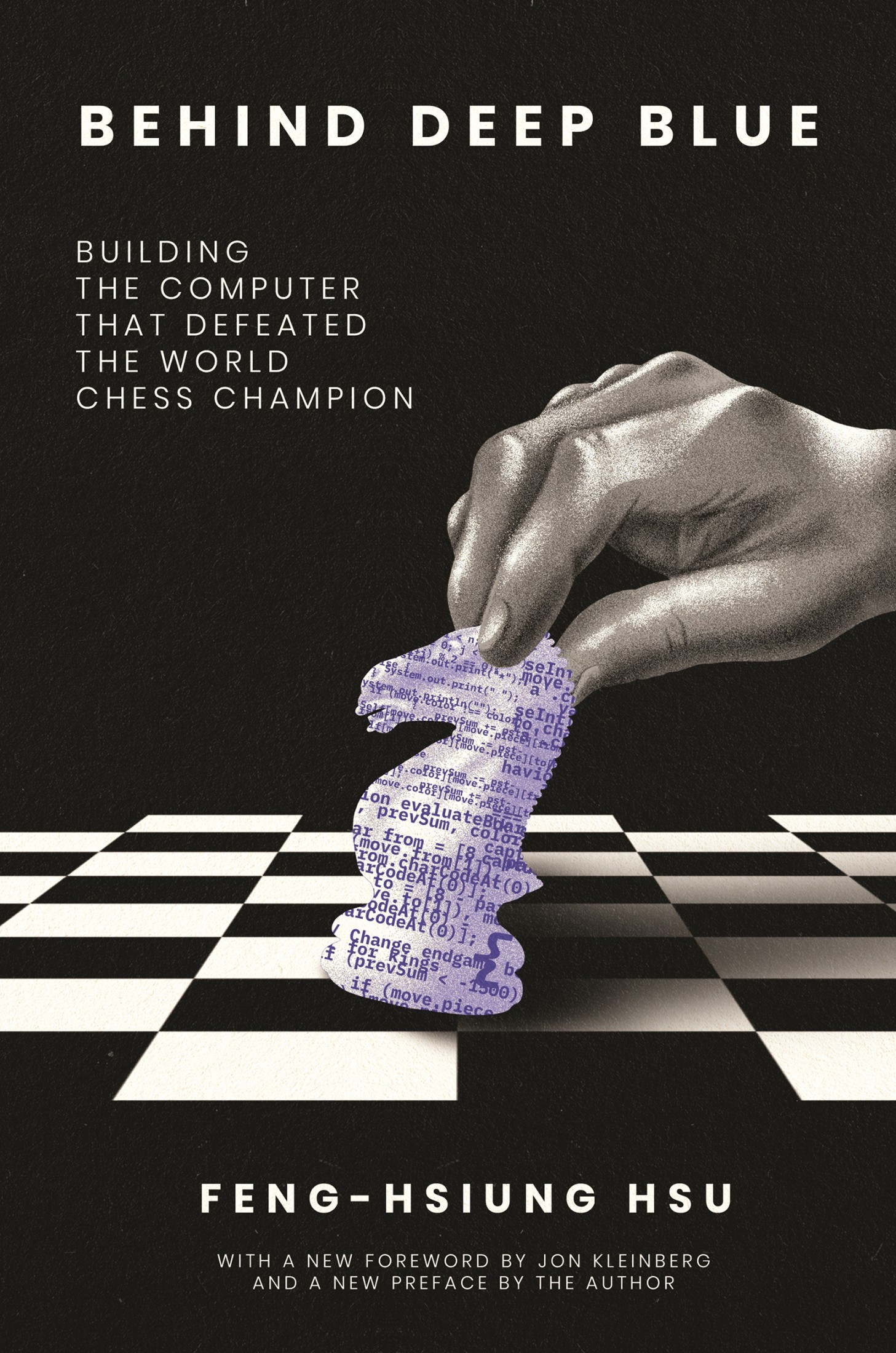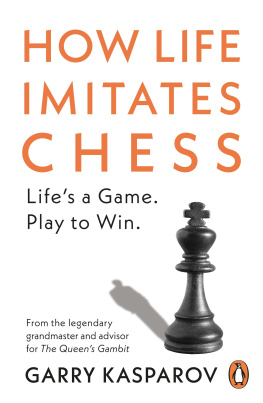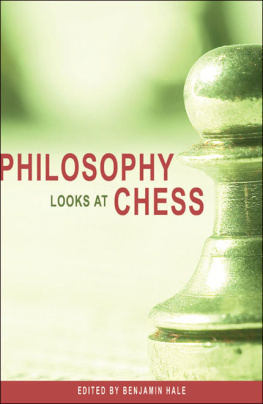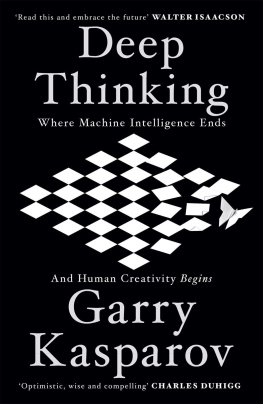
Behind Deep Blue
Behind Deep Blue
BUILDING THE COMPUTER THAT DEFEATED THE WORLD CHESS CHAMPION
FENG-HSIUNG HSU
With a new foreword by Jon Kleinberg and a new preface by the author
Princeton University Press
Princeton and Oxford
Copyright 2002 by Feng-hsiung Hsu
Foreword to the new paperback edition, copyright 2022 by Princeton University Press and preface to the new paperback edition, copyright 2022 by Feng-hsiung Hsu
Published by Princeton University Press,
41 William Street, Princeton, New Jersey 08540
In the United Kingdom: Princeton University Press,
99 Banbury Road, Oxford OX2 6JX
All Rights Reserved
First published by Princeton University Press in 2002
First paperback printing, with a new afterword, 2004
New paperback edition, with a new foreword by Jon Kleinberg and a new preface by the author, 2022
Paper ISBN 9780691235134
Library of Congress Control Number: 2021948921
ISBN (ebook) 9780691235141
Version 1.0
British Library Cataloging-in-Publication Data is available
Cover art by Sukutangan
press.princeton.edu

Contents

Foreword
There are many metaphors for artificial intelligence, beginning with the term artificial intelligence itself. And among these metaphors, one of the most evocative has always been the analogy with alien intelligencethat to truly interact with powerful artificial intelligence is to make contact with something that feels otherworldly.
Science fiction has provided us with mental images for what to expect in such an encounter. The alien spacecraft sits in front of us, opaque, impassive, waiting. Lacking any shared experience with it, our communication has to be structured and stylized; we invent rules for conversation. We flash a series of lights at it: 2, 3, 5. Lights blink back in return: 7, 11, 13. The human scientists offstage in the control room jump back from their terminals, exclaiming. It knows about the prime numbers.
Growing up with these stories, I never appreciated how closely they would match the experience of watching the world chess champion Garry Kasparov play against Deep Blue in 1996 and 1997. Two powerful intelligences, profoundly incomprehensible to each other, sit down and communicate through the cryptic, stylized language of chess moves. Kasparov puts a move on the board, and after a few minutes and a few billion computations, a move comes back in reply. The two entities are conversing with each other, each seeking to understand the other. We do not fathom, and in some very real sense cannot fathom, exactly how Deep Blue has arrived at its choice of moves. But we do know that however it is managing to play chess, it is utterly different from how its human opponent across the table is playing chess. And in this way, it is hard to escape the feeling that an alien presence has stealthily entered the playing venuea feeling reinforced by regular exclamations from commentators Maurice Ashley and Yasser Seirawan offstage in the control room: it knows about positional pawn sacrifices; it knows how to open an attack on a second flank; it knows the importance of blocking its opponents counterplay. These are all human concepts that we thought we had created to talk about chess strategy, and we were seeing them emerge from the computations that went into Deep Blues play.
Part of the subtlety to the story of Deep Blue is the way in which this metaphor of first contact with an alien intelligence is partly apt and partly an illusion. It is partly apt because the process by which Deep Blue arrived at its moves was so different from the human experience of thinking about moves in a chess game. But it is also partly an illusion, because it omits the role of the human team that built Deep Blue, and the human fields of study that developed the algorithms on which computer chess is based. We cannot give a full explanation for how the machine chose any specific move, but we know a lot about the mechanisms by which it searches and the ideas and heuristics that drive its decisions; we created these things.
This tension between the human and alien dimensions of powerful AI plays a key role in Feng-hsiung Hsus narrative of the multiyear journey that he and his colleagues followed to create Deep Blue. And in the twenty-five years since Kasparov sat across the chessboard from the machine, we have seen this tension manifest itself across many of the domains where AI is adoptedin online applications like search, recommendation, and image recognition; and in high-stakes societal contexts like medicine, education, hiring, lending, the political process, and the legal system. While these manifestations are diverse, it is useful to highlight three recurring themes in particular that we saw foreshadowed by the development of Deep Blue: the qualitative changes produced by quantitative increases in scale; the challenge of explaining the decisions made by AI applications; and the continuing role of human participants in the larger AI ecosystem.
The first of these themes is well-summarized in the mantra uttered by Kasparov in the first Deep Blue match, that quantity becomes quality. Of course, it has never been a matter of pure quantity, since the qualitative insights that humans put into the algorithms and the architectures of AI are crucial for their success. But there remains something conceptually elusive about the way we can start with an algorithm that we understand at a step-by-step level, and when we string together billions of these steps, we see emergent behaviors that are very hard to explain in terms of the steps themselves. As Hsu writes in telling the story, Sometimes, searching two-hundred million positions per second produces unusual new solutions. This effect has become even more potent in recent years, both in chess, where current chess engines like DeepMinds AlphaZero have achieved enormous levels of strength by training against themselves starting directly from the rules of the game, and in many other areas where AI is deployed.
The fact that quantity can become quality is a principle we know from the physical world as well. Think of a propeller. When its turned off, you can move the blunt metal blade by hand and see its rotations. But from the hand-simulation, its hard to understand how dramatically increasing this same propellers speed can allow it to do things that seem magical, lifting heavy aircraft off the ground. Or how dangerous it becomes when its doing that. Or the fact that at these speeds it will be essentially invisible to the human eye.
We suffer similar failures of imagination when we try to hand-simulate the algorithms that power modern AI applications and to reason about what they might do. As they have grown in strength, they have come to understand our speech, paraphrase our writing, explain what they see in our photos, autonomously guide our vehicles, diagnose our medical conditions, and discover new mathematical facts and scientific phenomena. They also make damaging errors in situations that we would have imagined as relatively free of risk. We struggle to anticipate both their successes and their failures, and how they vary as we make small changes to the methods they use or the data they are trained on. And all this is happening with systems that are often operating largely in the background, behind the unassuming white screen of a search results page or the sleek interface of a phones speech recognition system. In this way, like the propeller, AI has also become magical, dangerous, and invisible.
Next page












